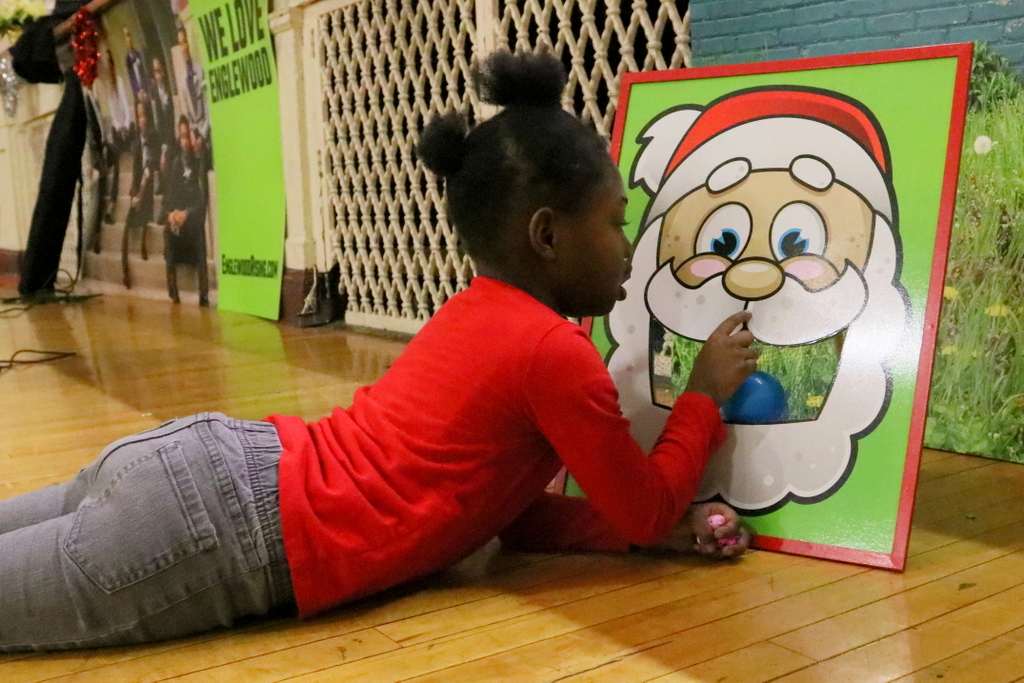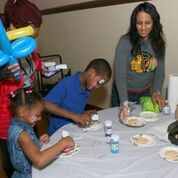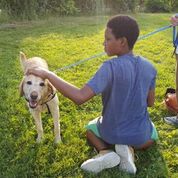
Lawrence Hall Ensures the Well-Being of Chicago Area Foster Children
Lawrence Hall is helping foster children in every way possible: finding them the right place to live, and easing them out of the system and into independent adulthood as they grow older. It’s a daunting task, and one that is sorely needed, especially in Chicago where so many children are affected by violence and/or neglect. Our heart goes out to these children, so when Lawrence Hall applied for a small grant, we were eager to lend a helping hand. We spoke to Lawrence Hall Vice President of Development Amber Webb, to learn more about this work.
Kars4Kids: Tell us about the population you serve?
Amber Webb: Lawrence Hall’s children and youth, who range in age from newborn to age 24, have survived a host of traumatic experiences—family disruptions, repeated academic failure, and neighborhood violence, to name a few examples. The vast majority of youth at Lawrence Hall have emotional and behavioral disorders, although we do occasionally provide services to those with a physical disability. All of our youth come from low-income families or communities. Over 50% of our youth and families are part of the foster care system. We serve over 1,000 kids and families a year and our demographics are: 68% African-American, 62% male. Those served by Lawrence Hall are primarily English speaking.
Kars4Kids: How do children end up in your programs?
Amber Webb: Most children and youth are referred to us through the Illinois Department of Children and Family Services (DCFS). For our other core programs, we receive referrals from school districts, the Cook County Department of Corrections, the Illinois Department of Human Services, and the Illinois Department of Juvenile Justice.
Kars4Kids: How is Lawrence Hall different from other foster youth programs?
Amber Webb: Our Foster Care Program has four distinct placements:
1) Home of Relative – with a child’s biological relative who is monitored by the program;
2) Traditional – with non-relatives maintaining a State of Illinois foster home license;
3) Specialized – for children with more intensive emotional and behavioral needs in licensed foster homes of either relatives or non-relatives, and
4) Treatment Foster Family Homes – staffed by a foster family in an agency-owned property where agency staff provide additional support to stabilize youth stepping down from a residential and/or group home facility. The goal is to get youth acclimated to a less restrictive environment while still providing the clinical support. Lawrence Hall has also gained a positive reputation in the LGBTQ community for our supportive services to family and youth who might not have experienced acceptance through other service providers.
Kars4Kids: Has anyone gathered data on what happens to foster youth after they age out of the system? What can you tell us about that?
Amber Webb: Lawrence Hall retains as much information as possible on our youth after leaving our care and encourages them to maintain contact with us. There is a small percentage of youth that maintain contact.
I’d like to share a recent data snapshot of trends in U.S. foster care placements from the Annie E. Casey Foundation which examines how placements for young people in foster care have changed from 2007 to 2017:
States have made progress, but they can and must do more to find families for kids in care. There are four ways that states can leverage the Family First Act to connect more kids in foster care with families. The Family First Prevention Services Act, signed into law in 2018, seeks to accelerate movement toward this vision, emphasizing prevention services, prioritizing family placement and incentivizing high-quality, residential treatment. Recommendations include (1) utilizing federally reimbursed services designed to maintain child and family connections when a child enters foster care; (2) prioritizing recruiting and retaining kin and foster families, especially for older youth and youth of color; (3) engaging families in decision making; and (4) requiring approval for non-kin placements.
One of the most insightful statements from the data snapshot states: “Being part of a family is a basic human need and essential to well-being, especially for children, teenagers and young adults who are developing rapidly and transition to independence.”
Here’s what the new data on child welfare placements tells us:
- There are growing pains: The child welfare system is less likely to place older children in families. In 2017, 95% of children 12 and under lived in families while just 58% of teenagers did.
- Progress Check: Nationwide, the proportion of kids in foster care who were placed in families rose from 81% in 2007 to 86% in 2017.
- Race matters: Between 2007 and 2017, the proportion of white kids placed in families grew by 6 percentage points while kids of color experienced smaller gains—between 1% and 5%.
Kars4Kids: What is the size of the foster youth population of Chicago?
Amber Webb: There are 17,920 children in foster care in Illinois; 3,347 of these children are waiting for adoptive families. In the city of Chicago, the number of Foster Care children is 2,676. If you include the Chicago suburbs of Cook County that number increases to 4,613.
Kars4Kids: How many foster youth are you serving at Lawrence Hall?
Amber Webb: In our 2018 fiscal year, we served 226 foster care children and youth. We have served 201 foster families.
Kars4Kids: Tell us about the Youth Advisory Councils. Why are they important part of the development of a young person in foster care?
Amber Webb: The Youth Advisory Councils provide youth to have a voice in the services we provide as well as help to identify gaps in our service. This provides them the opportunity to help us be better and meet their needs. Youth advisory councils occur both internally and externally. They are instrumental in formulating a strong voice for youth while in care and builds self-advocacy amongst our youth.
Kars4Kids: Tell us about Transitional Living. What is a typical scenario that proves the need of such a living set-up?
Amber Webb: For an older adolescent leaving state care, their future success depends on their ability to secure and maintain meaningful employment that pays a living wage, as well as, managing their finances responsibly so that they can become independent. Additionally, they need to learn daily living skills, such as cooking, cleaning, laundry and shopping in order to transition to independent living. The main objective of our older adolescent programs is to provide youth with the skills and knowledge to become positive contributors to the communities where they live and work.
Kars4Kids: How is Independent Living different than Transitional Living? Why is this important?
Amber Webb: Independent Living is the next step after Transitional Living. The Transitional Living program has 24-hour staff and is more instructional and focused on skill building. Independent Living is almost like being on your own, but with the safety net and support of periodic staff visits. For youth who don’t have family support or on-going guidance, navigation of the responsibilities of adulthood can be overwhelming. Through our programs, we are attempting to diminish the homeless youth population as well as the number of youth involved in the juvenile justice system.
Kars4Kids: What’s next for Lawrence Hall?
Amber Webb: Each year our annual Fall Fete Gala spotlights one of our key youth service areas. This year we are focusing on our healing therapies that include programs like Music Therapy, Canine Therapy, Therapeutic Recreation, Art and Storytelling. We offer this variety of supplement therapeutic services because we are looking for the keys to good holistic treatment for our children and youth. We utilize the tools to help our youth heal and grow. One treatment does not fit all and we tailor our treatment modalities to meet their individual needs and interests. Our Fall Fete Gala will be held on Saturday October 26, 6:30 pm at the Zhou B Art Center in Chicago, IL. For more information or to partner with us on this event please contact mtuffy@lawrencehall.org or call 773-334-7420.

